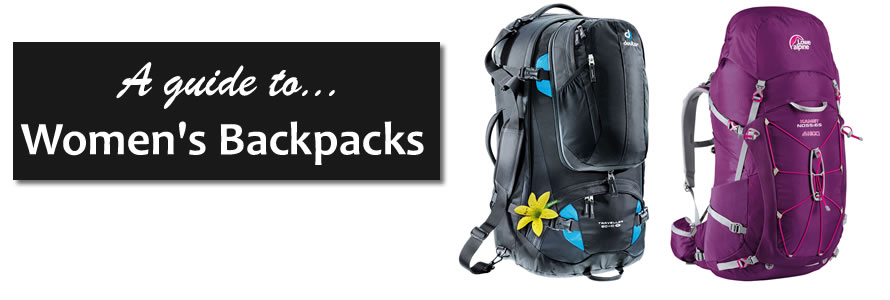When it comes to buying a backpack for travelling, it can be difficult to know where to start. You probably have a number of questions going around your head such as “do I need an adjustable back system?”, “which size backpack should I buy?” and finally, “what is the difference between unisex and women’s backpacks?” In this post we aim to shed some light on the features of backpacks for women and reasons you might consider buying one for your gap year.
Size is everything…
We’re all for gender equality, but let’s face it…men and women are built differently, and men can definitely handle the size and weight of a larger capacity backpack better than women! We recommend that women carry no more than a 70 litre backpack if they are petite, and most women’s backpacks on the market will only go up to around 70 litres in capacity.
The shorter back length of women’s backpacks is what sets them apart from the unisex models. If you’re unsure whether you should buy a women’s backpack, then you can measure your back length before you take the plunge. Simply measure the length of your back from the base of the neck (C7 Vertebrae) to the Iliac Crest to get an indication of whether or not you’d benefit from having a backpack tailored for shorter torsos. Women’s backpacks by Lowe Alpine have a back length of approximately 15-20″ (38-50cm). If you’re quite tall, you may find a unisex pack will be fine.
They aren’t just for women…
Ok, let’s get this one out of the way! Even though packs that are marketed as ‘women’s backpacks’ are generally aimed at women, this doesn’t mean they aren’t suitable for some men. The main difference you’ll find between unisex travel backpacks and backpacks for women is the shorter back length, which is designed to accommodate the generally shorter female torso. However, it is worth noting that many men can be on the shorter side, so may prefer to use a ‘women’s backpack’. Yes, some women’s backpacks come in more female friendly colours, but these may also appeal to men – there is no reason why a shorter man can’t use a travel pack which is marketed as a female backpack!
Protect your back…
One of the main reasons we would recommend buying a ladies backpack would be that they come in more manageable sizes, especially if you’re on the petite side of the height spectrum. Generally, you’ll struggle to find a women’s backpack larger than 70 litres in capacity, which may seem like a negative thing if you like to pack everything but the kitchen sink. However, petite travellers should try and limit the size of their pack to 50-70 litres maximum, as any more than this could cause strain on their back! Another advantage of the generally smaller nature of women’s backpacks is that you won’t be able to over pack for your trip.
Keep comfortable…
As mentioned above, female specific backpacks tend to be smaller in capacity, which will make them more lightweight and comfortable to carry. In addition to this, the shorter back length is designed to comfortably fit the shorter female torso and many manufacturers will also make the shoulder straps shaped to fit around the chest. With unisex packs you’ll find that the straps don’t take the anatomical differences between men and women into account and can potentially dig into your chest if you’re a woman…especially if you’re buxom! Some female specific backpacks also come with additional padding in the hip belt to make it more comfortable to wear against your hip bones. Buying a backpack with an adjustable back system is also wise, as this allows you to adjust the length of the harness to fit the length of your back more comfortably.
Manufacturers of women’s backpacks…
There are a number of women’s backpacks on the market from top rucksack manufacturers such as Vango, Lowe Alpine & Deuter. Each manufacturer has their own way of indicating whether the rucksack is their standard or female version. Lowe Alpine backpacks for women feature the initials ‘ND’ before the litres of the bag, which stands for Nanda Devi, this means ‘Blessed Goddess’ and is the second highest mountain in India. Vango and Deuter both use the intial ‘S’, which stands for ‘short’ to indicate the shorter back system length. Eagle Creek packs feature the intial ‘W’ after the litres of the bag to indicate that it is designed for women.

